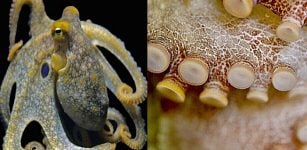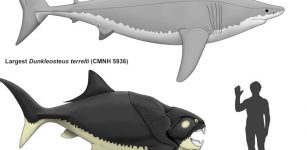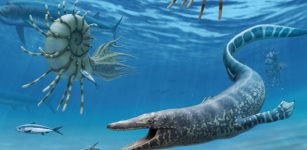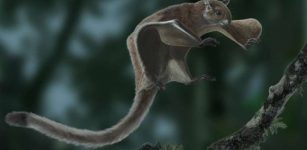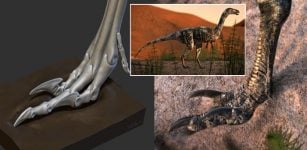First ‘Herd’ Of Dinosaurs Found Underground At Lightning Ridge, Australia
Eddie Gonzales Jr. – MessageToEagle.com – Scientists have revealed that fossils from an underground opal mine near Lightning Ridge, outback NSW, include remains from a herd of dinosaurs, among them a new dinosaur species and the world’s most complete opalised dinosaur.
“We initially assumed it was a single skeleton, but when I started looking at some of the bones, I realised that we had four scapulae (shoulder blades) all from different sized animals,” Dr Phil Bell, lead researcher from the University of New England in Armidale, said in a press release.
The new dinosaur has been named Fostoria dhimbangunmal in honour of opal miner Robert Foster, who discovered the fossils in the 1980s. The species name, dhimbangunmal (pronounced bim-baan goon-mal), means ‘sheep yard’ in the local Yuwaalaraay and Yuwaalayaay languages, in recognition of the Sheepyard locality where the bones were found.
“There are about 60 opalised bones from one adult dinosaur, including part of the braincase, and bones from at least another three animals” said Dr Phil Bell.
In total, parts of four Fostoria skeletons were unearthed, ranging from small juveniles to larger animals that might have been five metres in length, prompting speculation they were part of a small herd or family.
The bones, which are mostly grey potch opal, were found in the 1980s by opal miner Robert Foster at the Sheepyard opal field, near Lightning Ridge. Scientists from the Australian Museum in Sydney helped excavate the fossils, but the bones remained unstudied until donated to the Australian Opal Centre by Robert’s children Gregory and Joanne Foster in 2015, under the Federal Government’s Cultural Gift Program.
“Fostoria has given us the most complete opalised dinosaur skeleton in the world. Partial skeletons of extinct swimming reptiles have been found at other Australian opal fields, but for opalised dinosaurs we generally have only a single bone or tooth or in rare instances, a few bones. To recover dozens of bones from the one skeleton is a first, ” Jenni Brammall, palaeontologist and special projects officer of the Australian Opal Centre, says.
Fostoria was a two-legged plant-eating iguanodontian dinosaur closely related to the famous Muttaburrasaurus from central Queensland, which was discovered in 1980.
The discovery comes on the back of the new small plant-eating dinosaur also from Lightning Ridge, Weewarrasaurus pobeni, which was named by Dr Bell and colleagues late last year.
“The rate of discovery is astounding. On average, there’s at least one new dinosaur discovered around the world every week,” Dr Bell said. “With more palaeontologists and scientists looking further afield than ever before, it’s an exciting time for dinosaur lovers everywhere, especially in Australia.”
Written by Eddie Gonzales Jr. – MessageToEagle.com Staff Writer


